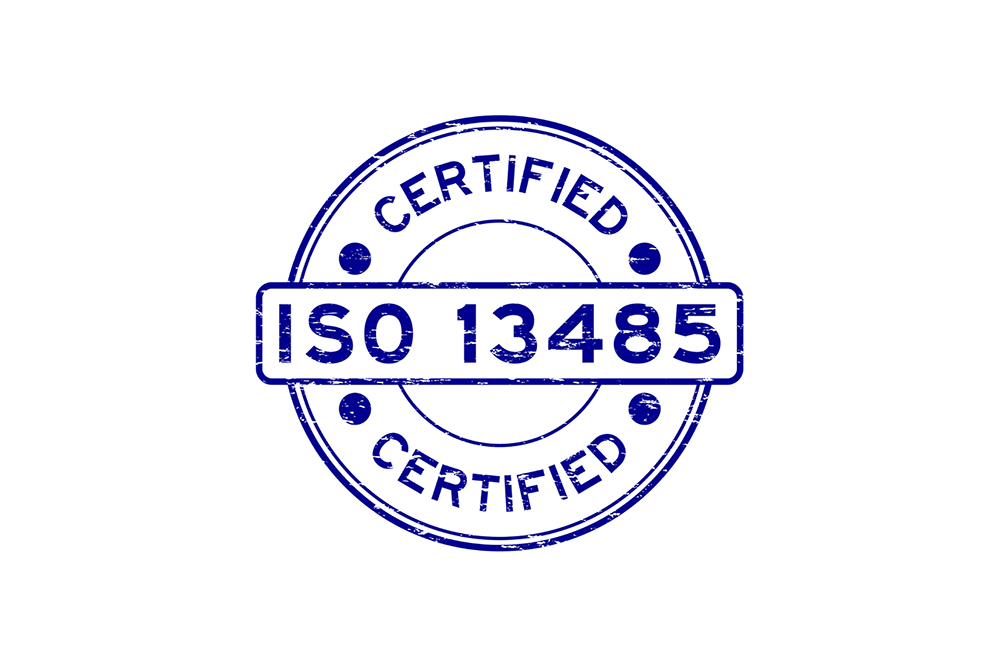
ISO 13485: What It Is And Why It Matters
It might be a voluntary certification for the quality management of medical devices, but ISO 13485 is considered by many to be the gold standard. In fact, as many medical device companies already know, obtaining this standard helps smooth the path to compliance with the European Union’s latest Medical Device Regulation.
In this blog post, we give an overview of ISO 13485 explaining what it is, why it matters, and where to find the right support to complete it – especially for medical devices intended for the European market.
What It Is
ISO 13485 outlines the standards for quality management systems (QMS) implemented by companies who manufacture medical devices and provide related services in the healthcare sector. No matter what involvement the company has in the product life-cycle, from design and development through to servicing and technical support, ISO 13485 sets out how to consistently meet customer and regulatory requirements.
In Europe, as with other regions, QMS is essential for companies to pass a rigorous audit, and enter the medical device market. What’s important for companies bringing a product to market is that ISO 13485 provides a robust framework for all the relevant procedures, and helps guide them through the production process. Not only does it add a layer of structure and certainty over medical device documentation, it also sends a clear signal to notified bodies, competitors, and customers, about a company’s high standards.
Why It Matters
The EU’s recently updated Medical Device Regulation (MDR) looks at both a company’s QMS and the product itself. As we’ve already mentioned, whilst it’s not compulsory to acquire ISO 13485 for medical devices entering the European market, doing so is hugely beneficial when it comes to MDR compliance. That’s because there’s significant overlap – around 80% – between this standard and the EU’s Medical Device Regulation (MDR).
As part of this crossover, the ISO ensures that a company defines clear roles within the QMS including representatives from management. That’s because accountability for product safety is hugely important for medical devices. There are clear liabilities and risks which require top-level oversight and control. To that end, there has to be a quality management representative from the management team involved in the set-up of the system.
A QMS is also important because it describes the functionality of a medical device with a focus on production. This includes Standard Operating Procedures (SOPs) together with description of the company, and its structures, including areas like complaints handling.
How It Works
Quality is sometimes envisioned as a pyramid, with the quality manual at the top. This summarises the scope of the QMS, and sets out which aspects of the ISO standard a company wants to fulfil. This depends on the type of medical device product and the activities of the company regarding medical devices. These include manufacturing, distributing, installing, or servicing. The next layer of the pyramid lists the procedures, and below that comes core instructions and templates for executing the processes.
QMS looks after quality throughout the lifecycle of a product. In ISO 13485, there are several chapters which guide companies through the process of setting up procedures, and how to document them. There is also guidance on how to continue product development, including analytics and feedback loops for making future improvements once it’s on the market.
With medical devices, it’s important to get the right balance between documentation, procedures, and productivity. Some companies can struggle to get a hold on this, and end up being weighed down by paperwork that is both time-consuming and unnecessary. Adopting ISO 13485 can help establish exactly what’s necessary. It’s also best practice.
ISO 13485 And The MDR
For medical device companies bringing a product to market, particularly those requiring certification under the EU’s MDR, obtaining ISO 13485 is a great way to ensure a robust QMS that can withstand high levels of scrutiny. It even includes guidance on supply chain visibility and supplier management – a significant feature of the MDR.
As we’ve already highlighted, bringing a medical device to market requires a QMS. Acquiring ISO 13485 ensures that a company has all the essential components in place. This can fill the gaps in their QMS, and enable devices to become MDR-ready more quickly and easily. In fact, the overlap between ISO 13485 and the MDR is so strong that many medical devices companies look to simultaneously apply for both certifications from a notified body.
Another feature worth noting about the MDR is that companies can take different routes through a product’s compliance with the regulation. One of the routes is full QMS compliance - Annex 9. Not only is this the most popular route of conformity through the MDR, as it allows for flexibility regarding changes to the product, it’s also something predominantly covered by ISO 13485.
It’s also good to know that when an ISO standard is adopted by a region, such as the EU, then it becomes a ‘harmonised standard’. This means that the standard is given a specific annex - in this case Annex Z - outlining which parts of the MDR are covered by the standard. This gives medical device companies the visibility to see at a glance how much of their ISO 13485 documentation can be repurposed for the MDR.
How To Get Started
For all the reasons outlined above, ISO 13485 has huge benefits for companies producing medical devices for the European market. Because the standard has become a benchmark of quality – as well as industry expectation for medical device companies – those without it are at a competitive disadvantage. In addition, certification covers around 80% of the process requirements set down by the MDR. So for medical device companies, the only real question is how to get started.
Need help getting started and navigating ISO 13485 and/or the MDR? You’re in the right place! Talk to Peercode.